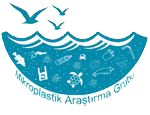Microplastic Pollution in the Soils of Lower Seyhan Plain and Seyhan River: Its Impact on Soil Biodiversity, Physicochemistry, Economical Fish Species and Transport Dynamics to the Marine Environment
This project aims to determine the current status of microplastic pollution in the Lower Seyhan Plain (ASO) soils in Turkey, its relationship with soil biodiversity, its transport to the marine environment via the Seyhan River, and its impact on the Seyhan River fish fauna.Project Manager: Prof. Dr. Sedat GÜNDOĞDU
Project Institution/Organizations: Çukurova University Faculty of Fisheries, Faculty of Agriculture
Project Summary: The risks posed by microplastics and their distribution in the marine environment have been studied quite well. However, there is limited information about the status of microplastics in terrestrial environments. This hinders our understanding of the full impact of microplastics on terrestrial environments. The number of studies on microplastic pollution in agricultural areas is particularly limited worldwide, with only one study in Turkey. This project aims to determine the current status of microplastic pollution in the Lower Seyhan Plain (ASO) soils in Turkey, its relationship with soil biodiversity, its transport to the marine environment via the Seyhan River, and its impact on the Seyhan River fish fauna. The project will also investigate the relationship between microplastics in soil and soil physicochemistry. The amount of microplastics in the surface water and sediment of the Seyhan River and the extent to which microplastics are transported to the marine environment via the Seyhan River will be determined. For this purpose, soil samples will be collected from agricultural areas in the ASO, surface water samples from the Seyhan River, sediment samples from the riverbed, and fish samples from the fish species distributed in the river. The microplastic content of these samples will be analyzed. In addition, various living groups in the soil samples will be identified. This will allow us to determine the biodiversity and its relationship with the amount of microplastics, as well as the relationship between soil physicochemical properties and the amount of microplastics. The relationship between the amount of microplastics and the land use characteristics of the area where the soil samples were taken will also be investigated. A hydrodynamic transport model will be developed for the Seyhan River to determine the time it takes for microplastics to reach the sea and, if any, the locations where they accumulate in the river under different flow conditions. This will be a significant step towards understanding the status of the Seyhan River, one of the rivers that pollutes the Mediterranean the most with microplastics, and the extent of microplastic pollution in the ASO soils it flows through, and its relationship with soil biodiversity.

Bize Ulaş
